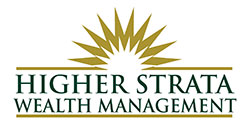
Nearly every one of the executives I work with that have retired from the Aerospace & Defense Industry in the last five years have continued to work as consultants either as an employee or self-employed. After spending the last 30+ years as an employee, retiring executives who want to keep working may not know about these three tax reducing strategies available to them as self-employed business owners.
Strategy #1 – Reduce Your Payroll Taxes by Changing How You Get Paid
Strategy #2 – Defer Taxes on More Income by Creating Your Own Retirement Plan
Strategy #3 – More Tax Deductions (Qualified Business Income Deduction)
Strategy #2 – Defer Taxes on More Income by Creating Your Own Retirement Plan
Beyond the Traditional IRA and Roth IRA which have very low contribution limits, self-employed consultants have several other options to help defer income and reduce taxes.
- Simplified Employee Pension (SEP) IRA
- Solo 401(k)
- Cash Balance Pension
SEP IRA
SEP IRAs are easy to set up and operate with low administrative costs and flexible annual contributions, which can be a good plan if cash flow is an issue. As a business owner, you can defer taxes on 25% of compensation up to $280,000 for a maximum contribution of $56,000 in 2019 ($57,000 in 2020).
Because only employer contributions are allowed with a SEP IRA there are no “catch up” contributions allowed as an employee if you are over 50 as would be available with a 401k.
A SEP IRA can be established for a year as late as the due date, including extensions, of your tax return for that year.
Solo 401k
The Solo 401(k) plan is nothing new, rather it is simply a traditional 401(k) for a business owner with no employees or a business owner and their spouse. The biggest advantage of this plan over a SEP IRA is the ability to make contributions as both employer and employee.
As the employee (yourself), you are allowed deferrals up to 100% of “earned income” up to the annual contribution limit of $19,000 in 2019 plus the $6,000 catchup if you are over 50 for a total of $25,000. In 2020, the limit increases to $19,500 with a larger $6,500 catchup if you are over 50. The catchup feature is not available with a SEP IRA because it only allows contributions from the employer.
As the employer (also yourself), you are allowed nonelective contributions up to 25% of your “earned income” which is defined as net earnings from self-employment after deducting one-half of your self-employment tax and contributions to yourself.
Total contributions cannot exceed $62,000 in 2019 if you are over 50. In 2020, the maximum increases to $63,500 if you are over 50.
The limit on your compensation to be used to calculate your contribution is $280,000 in 2019 and increases to $285,000 in 2020.
Remember if you spouse is also employed by your business, they can receive the same benefit potentially doubling your total contributions as a couple.
Unlike the SEP IRA, the Solo 401(k) must be set up before year end, but you can wait to fund it when your taxes are filed.
Regardless of which plan you use, SEP IRA or Solo 401(k), the ability to increase your contributions and stay below certain income limits will allow you to use the new 20% Qualified Business Income (QBI) pass through deduction. I will discuss this in the next and last Part 3 of this series.
Cash Balance Pension
If you want to save even more in taxes or need to play catch up for retirement and you have a high and steady income, then you may want to consider adding a Cash Balance Pension plan (also referred to as a Defined Benefit Plan) to your Solo 401(k).
This is especially appealing to older business owners as the amount you can contribute is based on your age. For example, someone between the ages of 60 and 65 can contribute a combined $338,000 between employee deferrals, employer contributions and Cash Balance contributions.
The objective of a Cash Balance Pension is to provide a defined amount of lifetime income for retirement like a traditional pension. And for business owners, they can contribute substantial amounts now that are tax deductible to fund future benefits.
Contributions are calculated by an actuary based on the benefit you set, your age, return assumptions, desired retirement date, etc. No other annual contributions limit applies. However, there is one very important difference in that the contribution amounts are not discretionary as they are in a 401(k) plan. They are written into the plan document as a flat amount or as a percentage of pay. So, if you have a bad year, you may need to cut back on the 401(k) portion of the plan in order to fund your Cash Balance Pension contribution.
The maximum annual retirement benefit that is allowed is $225,000 for 2019 and increases to $230,000 in 2020. Your desired lifestyle in retirement becomes part of the calculation as to how much you can contribute.
Cash Balance Pension plans can be complex and are not right for everyone, but for those who can use them, the before tax contributions and resulting tax savings can be significant.
